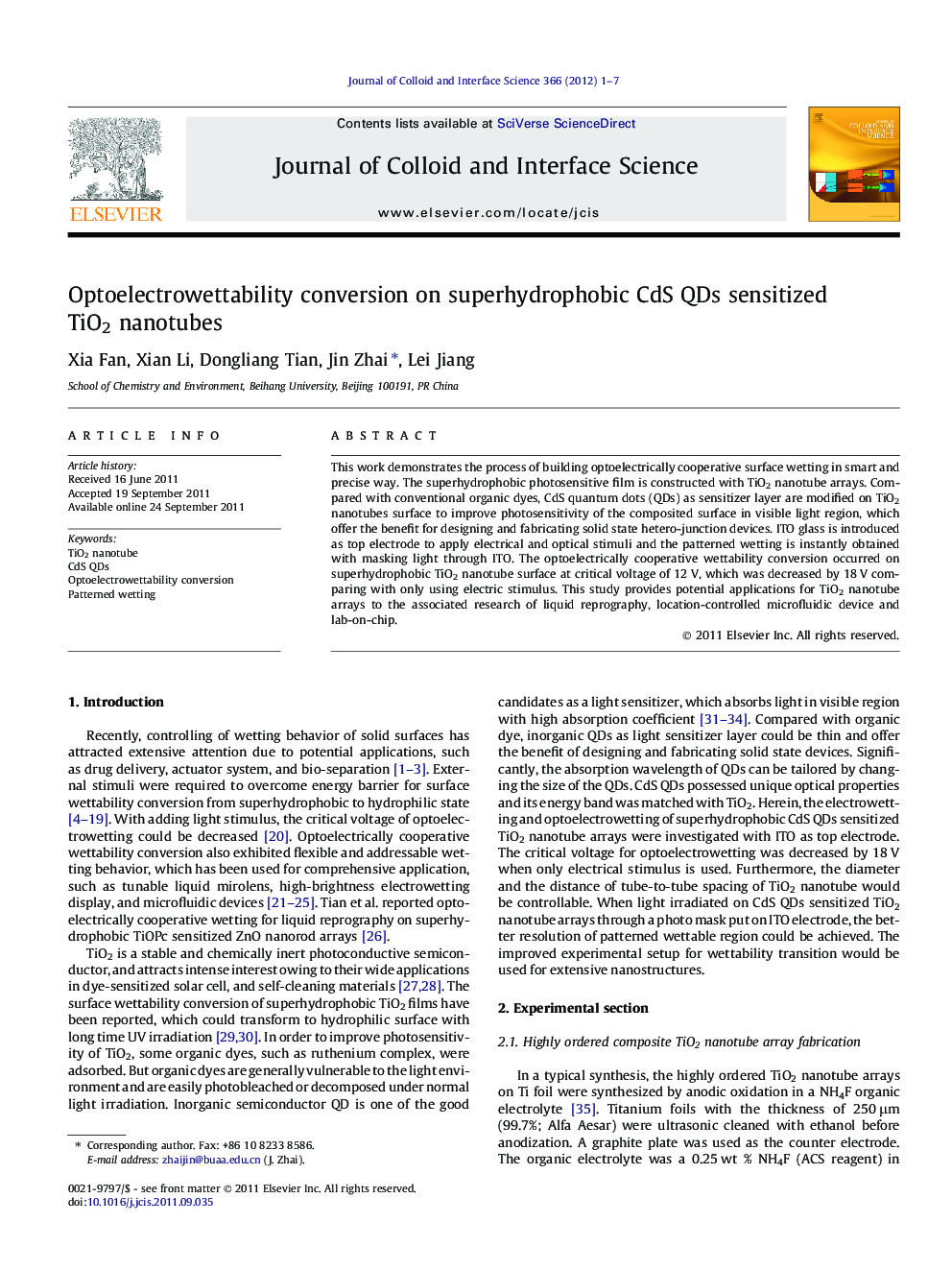| Article ID | Journal | Published Year | Pages | File Type |
|---|---|---|---|---|
| 608372 | Journal of Colloid and Interface Science | 2012 | 7 Pages |
This work demonstrates the process of building optoelectrically cooperative surface wetting in smart and precise way. The superhydrophobic photosensitive film is constructed with TiO2 nanotube arrays. Compared with conventional organic dyes, CdS quantum dots (QDs) as sensitizer layer are modified on TiO2 nanotubes surface to improve photosensitivity of the composited surface in visible light region, which offer the benefit for designing and fabricating solid state hetero-junction devices. ITO glass is introduced as top electrode to apply electrical and optical stimuli and the patterned wetting is instantly obtained with masking light through ITO. The optoelectrically cooperative wettability conversion occurred on superhydrophobic TiO2 nanotube surface at critical voltage of 12 V, which was decreased by 18 V comparing with only using electric stimulus. This study provides potential applications for TiO2 nanotube arrays to the associated research of liquid reprography, location-controlled microfluidic device and lab-on-chip.
Graphical abstractThe optoelectrically cooperative wettability conversion occurred on CdS QDs sensitized TiO2 nanotube surface at critical voltage of 12 V, which was decreased by 18 V comparing with only using electrical stimulus. The patterned wetting is instantly obtained with masking light through ITO.Figure optionsDownload full-size imageDownload high-quality image (104 K)Download as PowerPoint slideHighlights► Superhydrophobic CdS QDs sensitized TiO2 nanotubes were prepared for optoelectrically cooperative wettability conversion. ► CdS QDs were used as the stable and effective sensitize layer. ► The critical voltage was highly decreased comparing with only using electric stimulus. ► Stable and controllable surface of TiO2 nanotubes exhibited better resolution of patterned wettable region. ► Improved setup with ITO top electrode could be used for any nanostructures on different substrates.
